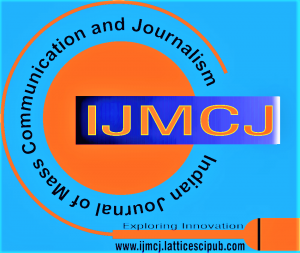Community Documentary: Move Towards Digital Inclusion
Manaswinee Mahanta
Manaswinee Mahanta, RSCOM, Royal Global University, Guwahati, Assam, India.
Manuscript received on 24 January 2022 | Revised Manuscript received on 10 February 2022 | Manuscript Accepted on 15 March 2022 | Manuscript published on 30 March 2022 | PP: 8-14 | Volume-1 Issue-3, March 2022. | Retrieval Number: 100.1/ijmcj.C1009031322 | DOI:10.54105/ijmcj.C1009.031322
Open Access | Ethics and Policies | Cite | Mendeley | Indexing and Abstracting
© The Authors. Published by Lattice Science Publication (LSP). This is an open-access article under the CC-BY-NC-ND license (http://creativecommons.org/licenses/by-nc-nd/4.0/)
Abstract: This research paper looks at the dynamics of digital divide and the potential of community documentaries to challenge them. Researcher critically reviewed the literatures on community media initiatives and result of such media exposures. This research work considers the Community video works as Cinẻma Pur and put forward some theoretical understanding to define the term documentary from the basic idea of visual documentation, with an attempt to establish any kind of community visual documentation as documentary work and thus provides a theoretical reference to such documentation as Community Documentary, nullifying the much used alternative expression of Community Video. Influences of such Community Documentaries and their making process on the women are further elaborated from gender perspective. Researcher looks at the potential of these documentary making procedures taken up for, of and by the community women, with and without technical supports from outside agencies, as a step forward to bridge the digital divide. Ensuring the access and skill to use the Information and Communication Technologies (ICT), making process of community documentaries enabled the community women to participate and get benefited from growing knowledge and information society. All the three aspects of digital inequalities, better known as digital divides: 1.Economic divide or infrastructural inequality 2.Usability divide or inequality in digital literacy 3.Empowerment divide or participation inequality, are stressed while examining whether community documentaries can serve as a type of digital inclusion. Theoretical base of the model is being scrutinized by three case studies taken up in the Indian state of Gujrat and Andhra Pradesh: 1.’Gender Sensitive Governance through ICT’ by Mahila Swaraj Manch, Shihore-a project base for ‘Making Women’s Voice and Votes Count’ –a multi-site project funded by UN Women, 2. ‘Ek Poltun Bheek Nu’ by the community women of Narmadapura, Baroda and 3.‘When Women Unites’ by the community women of Nellore.
Keywords: Community, Community Media, Community Documentary, Digital Inclusion
Scope of the Article: Film
